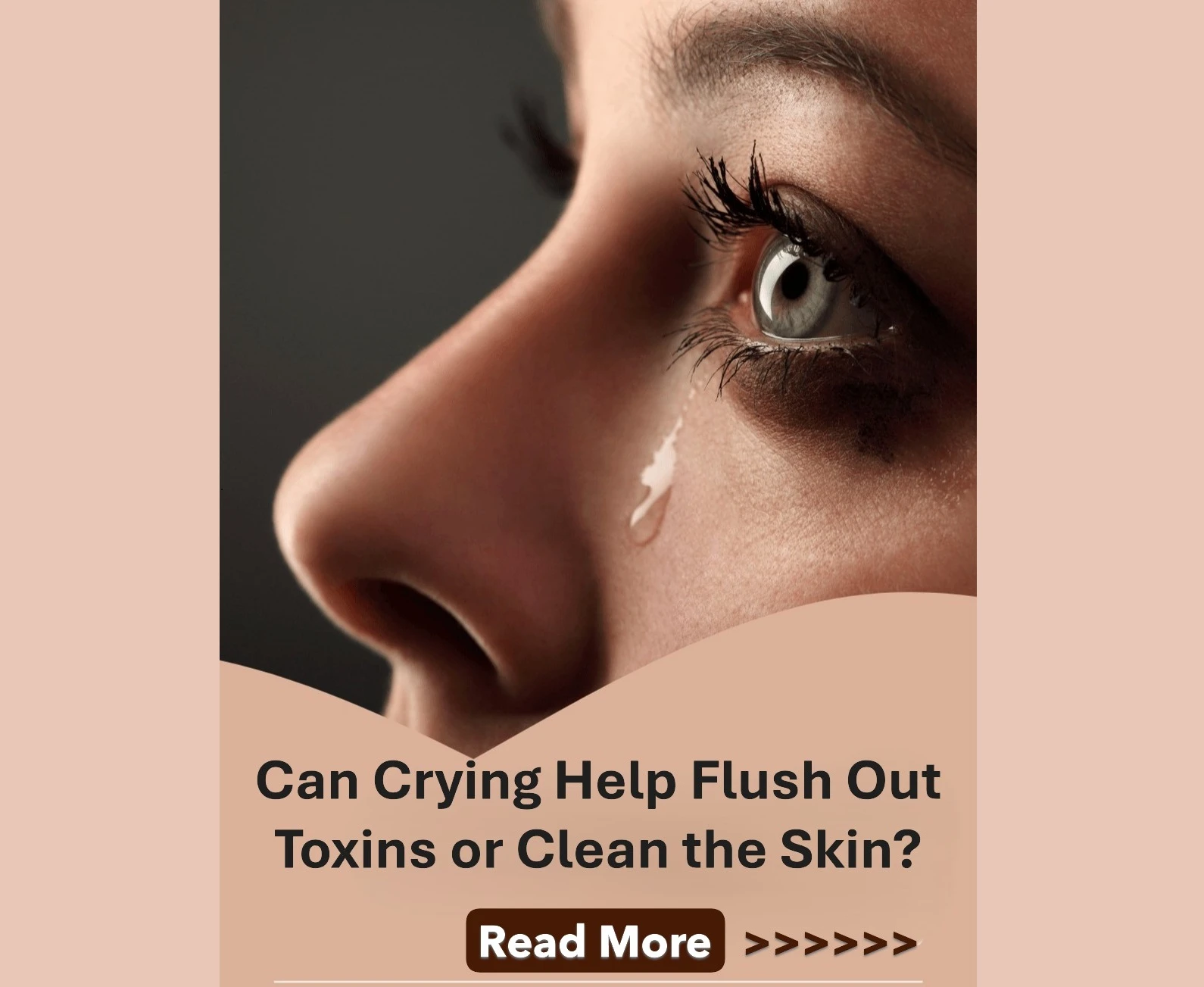Can Crying Help Flush Out Toxins or Clean the Skin? Separating Myth from Science
Can Crying Help Flush Out Toxins or Clean the Skin? Separating Myth from Science
Many of us have heard the idea that crying is more than an emotional release—it supposedly “flushes out toxins” or somehow cleanses the skin. But is there any truth to this popular belief, or is it mostly myth? Let’s explore what really happens when we cry and how it affects our body and skin.
The Science Behind Tears
Tears aren’t just salty water. They’re a complex blend of water, electrolytes, enzymes, proteins, and lipids. There are three main types of tears:
-
Basal tears: Constantly produced to keep our eyes lubricated.
-
Reflex tears: Triggered by irritants like smoke, wind, or onions to protect and cleanse the eye.
-
Emotional tears: Released in response to feelings like sadness, stress, or even happiness.
Interestingly, emotional tears do contain trace amounts of stress-related hormones like ACTH (adrenocorticotropic hormone) and leucine enkephalin (a natural painkiller). This has led some to believe crying helps eliminate stress “toxins” from the body.
Does Crying Really Flush Out Toxins?
While it’s true that emotional tears contain small amounts of stress hormones, the quantity is extremely minimal. Crying alone doesn’t significantly detoxify the body in the same way your liver or kidneys do. These organs remain the body’s primary detox system, processing and removing harmful substances far more efficiently.
However, crying does have real emotional and physiological benefits. It can help lower stress by activating the parasympathetic nervous system, leading to feelings of calm and relief after a good cry.
Can Crying Clean Your Skin?
Tears do play an important role in cleansing—but this is mostly limited to your eyes, not your face. Reflex tears help remove dirt, debris, and irritants from the eye’s surface, keeping them healthy.
As for your skin, tears running down your cheeks don’t provide cleansing benefits. In fact, repeated crying can sometimes irritate the skin. Here’s why:
-
Salt content: Tears contain salt, which can draw moisture out of the skin, leading to dryness or flakiness.
-
Rubbing and wiping: Using tissues or rubbing your eyes and face can damage delicate skin, cause redness, and even contribute to fine lines.
-
Temporary puffiness: Crying can cause blood vessels around the eyes to dilate and tissues to swell, leading to puffiness or “crying eyes.”
So while crying doesn’t detox your body or cleanse your skin directly, the process can still feel emotionally cleansing—which is an important kind of release.
Tips to Protect Your Skin After Crying
If you find yourself crying, here’s how to care for your skin afterward:
-
Gently pat your skin dry: Avoid harsh rubbing.
-
Hydrate: Apply a soothing, lightweight moisturizer to replenish moisture.
-
Cool compress: Helps reduce puffiness and redness under the eyes.
-
Clean hands: Make sure your hands are clean before touching your face.
The Bottom Line
Crying isn’t a reliable method to flush out toxins or clean your skin in a physical sense. However, it can help you feel emotionally lighter by lowering stress levels and releasing built-up feelings.
So while tears won’t purify your complexion, embracing them as a natural response to emotion can be good for your overall mental and emotional health—and that inner calm can often show on your skin too.

Related Blog
What Causes Oily Skin and Can It Be Managed Naturally? Exploring Root Causes and Gentle Solutions
Aug 2, 2025 by Admin
General
What Are the Signs That You Have Sensitive Skin? Key Symptoms to Help You Identify This Delicate Skin Type
Aug 1, 2025 by Admin
General